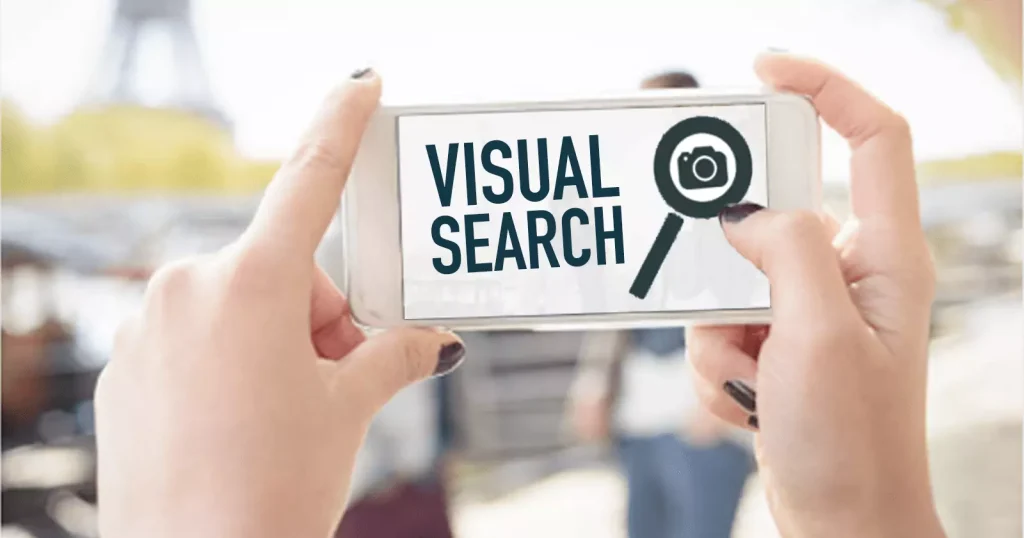The way people search is changing faster than most brands can keep up. In 2025, search isn’t just about typing words into Google anymore. It’s about seeing, speaking, and experiencing results in new ways. Visual search SEO is leading that change — and if you want more clicks, traffic, and visibility, it’s time to master it.
Imagine a shopper holding their phone up to a product. They snap a picture, and within seconds, they find similar items, pricing, and stores nearby. That’s visual search in action. Now add voice assistants, AI-generated visuals, and augmented reality (AR), and you have the next frontier of SEO: visual search SEO powered by multimodal experiences.
Let’s explore how you can win more clicks with this fast-growing trend — and make sure your brand isn’t left behind.
Why Visual Search SEO Is Transforming 2025
SEO has always evolved with technology. But the rise of visual search represents more than a trend — it’s a complete shift in how users connect with information. People are visual learners by nature. They process images 60,000 times faster than text. They respond to color, shape, and movement before they even read a single word.
Because of this, visual search SEO has become a critical strategy for brands that rely on visual appeal — like fashion, design, travel, food, and real estate. It allows users to skip the guesswork. Instead of typing “floral summer dress,” they simply take a photo or upload an image. Instantly, algorithms identify patterns, match colors, and display the most relevant products or content.
Search engines are adapting fast. Google Lens now processes over 12 billion visual searches per month. Pinterest Lens helps users find similar outfits, furniture, and even recipes. Amazon Visual Search allows shoppers to find exact matches just by scanning a product.
These aren’t niche tools anymore. They’re mainstream, and they’re driving a new kind of SEO — one that depends on how your images communicate as much as your words.
SEO and Visual Search: Why It Matters More Than Ever
SEO and visual search now go hand in hand. In the past, SEO meant optimizing keywords, meta descriptions, and backlinks. Today, it also means teaching search engines to see your content.
Every photo, infographic, and video thumbnail must tell a story that both users and algorithms can understand. To achieve this, you need structure, context, and clarity.
Here’s why it matters:
- Google’s algorithms increasingly favor visual-rich results.
- People retain 80% of what they see, but only 20% of what they read.
- Visual search increases purchase intent by up to 30%.
So, if you’re still treating images as an afterthought, you’re missing clicks, conversions, and credibility.
SEO Techniques to Boost Your Visual Search Performance
Now that you know why visual search matters, let’s talk strategy. Below are 10 detailed techniques to help you win more clicks through visual search SEO — all practical, human-friendly, and designed for the modern digital ecosystem.
1. Optimize Every Image for SEO
Let’s start with the basics. Every image should be optimized with purpose. Rename files descriptively before uploading. Instead of “IMG_4381.jpg,” use “blue-leather-handbag.jpg.” Add concise, descriptive alt text like “woman holding a blue leather handbag under sunlight.”
Then, compress your images to improve load speed — because yes, SEO and visual search rely heavily on performance. Use next-gen formats like WebP. When pages load faster, users stay longer. And when users stay longer, rankings rise.
Remember, slow sites lose clicks. Fast, image-optimized sites win them.
2. Use Structured Data to Describe Visual Content
Search engines can’t “see” an image the way humans do. They rely on structured data. By adding schema markup, you help them interpret what’s in your visuals.
If your page features a product, include Product schema. For recipes, use Recipe schema. For blog posts, use Article schema. These microdata tags connect images, descriptions, and metadata into one cohesive story.
Structured data doesn’t just help rankings. It enhances how your visuals appear in search — often adding star ratings, prices, or product availability that attract more clicks.
3. Write Image Captions That Add Context
Never underestimate the power of captions. They’re one of the most-read pieces of content on a page. Captions help both readers and algorithms understand why an image matters.
For visual search SEO, use captions that describe the story behind the image. Instead of “Office setup,” try “Minimalist home office with natural lighting and modern furniture.” It’s simple, human, and searchable.
4. Create High-Quality, Original Visuals
Here’s where most brands stumble: they use stock photos. While convenient, they’re not unique — and algorithms can tell. Original visuals, on the other hand, boost credibility and engagement.
Invest in your own photos, infographics, and branded imagery. Google rewards originality because it improves user experience. And users reward it too — they trust authentic visuals more than generic ones.
Originality wins attention. Attention wins clicks.
5. Make Visuals Mobile-First
Most visual searches happen on mobile devices. That means your images should look stunning and load instantly on smaller screens.
Use responsive design so images adapt to any resolution. Test how they appear on mobile browsers, social apps, and even voice-activated devices. If your visuals break or stretch, users bounce.
Mobile optimization isn’t optional anymore. It’s the foundation of visual search SEO success.

6. Combine Visual Search with Voice Search
This is where multimodal SEO becomes powerful. Imagine someone pointing their camera at a product and asking, “Where can I buy this cheaper?” That’s both voice and visual search combined — and it’s happening right now.
Optimize your content for both. Use conversational phrases in image descriptions and product titles. Integrate Q&A sections that sound like how people talk. This makes your visuals more discoverable when combined with voice-based assistants like Siri, Alexa, or Google Assistant.
The future of SEO isn’t just visual. It’s conversational too.
7. Use Alt Text That Reads Naturally
Alt text is often abused — stuffed with awkward keywords or vague descriptions. For effective visual search SEO, write alt text as if you’re describing the image to a friend who can’t see it.
For example:
❌ “SEO visual search strategy 2025 photo digital marketing”
✅ “A marketing expert explaining visual search strategies for SEO in 2025.”
See the difference? One sounds robotic. The other feels natural, helpful, and relevant.
8. Build a Visual Content Library
Consistency builds trust. A library of optimized, categorized visuals helps your brand rank better across multiple searches.
Organize your visuals by topic, style, and relevance. Include consistent branding elements — fonts, colors, tone — so algorithms associate your visuals with authority.
Also, update your library regularly. Old visuals lose traction. Fresh visuals attract attention and clicks.
9. Use Social Platforms for Visual SEO Signals
Pinterest, Instagram, and TikTok aren’t just social media platforms. They’re search engines in disguise. Each visual post, tag, and description acts as a mini SEO signal.
Add keyword-rich captions and use descriptive hashtags. Link your visuals back to your website. When users engage, they send positive signals that improve your ranking across platforms.
Remember, social discovery often leads to search discovery.
10. Measure and Improve Continuously
You can’t improve what you don’t measure. Use tools like Google Search Console, Pinterest Analytics, and SEMrush to track which visuals drive the most clicks.
Analyze impressions, click-through rates, and engagement. Update underperforming visuals with better descriptions, improved lighting, or richer context.
Optimization is a loop, not a one-time fix.
How SEO and Visual Search Create Click-Worthy Experiences
Great SEO isn’t about tricking algorithms. It’s about helping people find what they need faster. When you combine strong SEO practices with visual intelligence, you create a seamless experience — one that feels intuitive and inspiring.
Every optimized image becomes a gateway to your brand. Every caption, alt tag, and schema entry adds clarity. And every second of faster load time keeps users engaged just a bit longer.
When people can see what they want, they click. When they trust what they see, they convert.
Visual Search SEO and the Future of Online Discovery
The rise of visual search SEO signals a deeper shift in human behavior. We’re moving from text-driven discovery to experience-driven discovery. Search engines aren’t just matching words anymore; they’re matching meanings, emotions, and visuals.
Soon, your customers will shop using their cameras, explore using AR, and ask AI to find “that jacket I saw in a video last week.”
If your visuals aren’t ready for that — your competitors’ will be.
So start now. Optimize your images. Structure your metadata. Speak the language of visuals. Because in 2025, visibility isn’t just about words; it’s about what your audience sees.
Your Clicks Depend on What They See
Winning more clicks with visual search SEO isn’t about chasing algorithms. It’s about embracing how people interact with the world. They speak, they snap, they search — and they expect instant answers.
SEO today is about making sure your content looks as good as it reads. It’s about creating a bridge between what people imagine and what they discover.
You don’t need to overhaul everything at once. Start small — optimize your top images, refine your alt text, and make your site mobile-friendly. Then expand. Test. Iterate.
Because the future of clicks belongs to the brands that show up — visually, clearly, and authentically.




